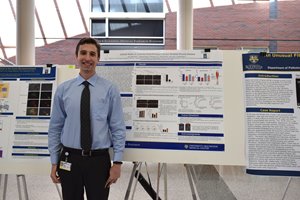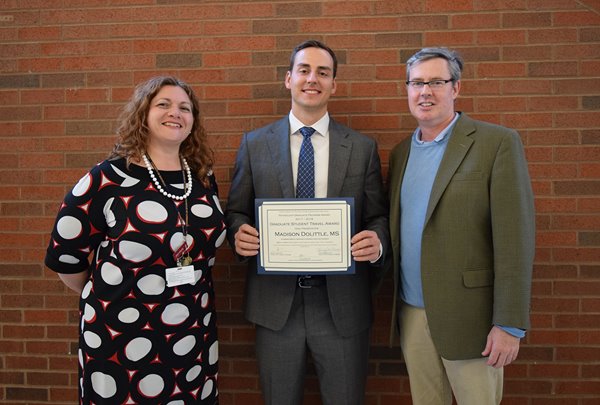Bentley Discovers Bacterial Phenomenon in Bone Implant Infections
Karen de Mesy Bentley (formerly Jensen), M.S., director of the Electron Microscopy Shared Resource Laboratory and faculty associate in the Department of Pathology and Laboratory Medicine, has discovered something new about the behavior of Staphylococcus aureus bacteria and why it may resist antibiotic treatment and recur in patients who have had a hip or joint implant.
Bentley is the lead author in an NIH funded study published in the Journal of Bone and Mineral Research (May 2017) where she utilized transmission electron microscopy (TEM) to examine the bones of mice with implant associated S. aureus chronic osteomyelitis.
While examining sections of bone under TEM high magnification, Bentley discovered that some bacteria were able to change shape and squeeze into submicron spaces which are called canaliculi. Her study describes round bacteria becoming rod-shaped to accommodate the submicron diameter space of canaliculi. The bacteria are then protected from treatment with traditional antibiotics delivered via blood vessels.
“When I saw this, I was shocked,” said Bentley. “Staph has never been described as being able to deform. It’s always been described as round, one micron in diameter to grow in clusters like grapes on a vine.”
Soon after documenting this bizarre shape shifting behavior in a mouse model, Bentley initiated studies on human S. aureus infected bone specimens and in December of 2016, discovered the same bacterial phenomenon occurs in human bone.
The initial findings explain, among other things, why a staph infection in humans may return despite weeks or months of antibiotic treatments and bone debridement when replacing an infected implant. It also explains why infections can recur, sometime years – even decades – later, after going undetected in the patient.
Bentley will soon be a co-investigator in a P50 NIH-funded grant working with the principal investigator, Edward Schwarz, Ph.D., the director of the Center for Musculoskeletal Research and his team to continue studies on human S. aureus chronic osteomyelitis specimens.
“If we can identify a gene that allows S. aureus to shift into rod shaped bacteria, then maybe we can develop a drug to prevent invasion of osteocyte canaliculi and also recurrence,” she said.
Bethany Bushen | 5/31/2017




